How it Works
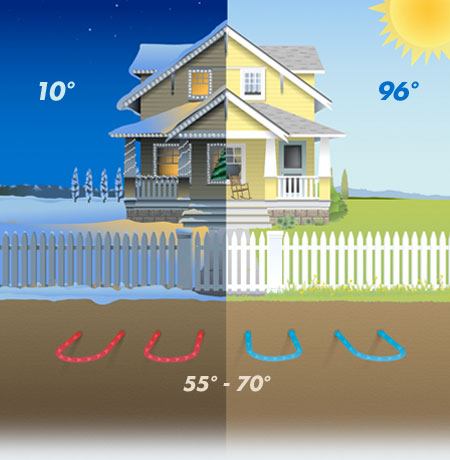
The average year-round ground temperature is 50-70° only three to four feet beneath the frost line.
Cost Effective Renewable Energy
Just below the frost line is a wealth of solar energy that’s been collected and stored. A geothermal heat pump taps into this free and renewable energy to provide the most efficient and cost-effective heating and cooling available. By simply moving that energy to and from the home, a geothermal heat pump isn’t burning fossil fuels to create heat, which means your home will be safer and your carbon footprint will be smaller.
Heating Mode
In winter, a series of fluid-filled underground pipes absorbs the stored heat and carries it indoors. The indoor unit compresses the heat to a higher temperature and distributes it throughout the building.
Cooling Mode
In summer, the system reverses, pulling heat from the building, carrying it through the same pipes, and depositing it into the cooler earth.
Four types of earth loops
A geothermal system uses a series of underground pipes called a “loop.” A loop is the secret behind a geothermal system’s amazing efficiencies and the biggest difference from ordinary heating and cooling technologies.
-
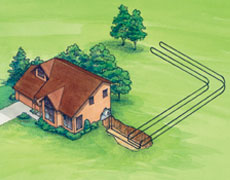
Horizontal Loop
A typical home needs 1/4 to 3/4 of an acre to utilize a horizontal loop, and trenches are dug using a backhoe or chain trencher. High density polyethylene pipes are inserted, and the trenches are backfilled.
-
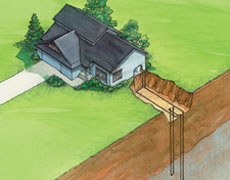
Vertical Loop
A typical home requires three to five bore holes, dug with a drilling rig. A pair of pipes with special u-bend fittings is inserted into the holes.
-
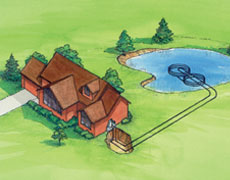
Pond Loop
A 1/2 acre, 8-foot-deep pond is usually sufficient for the average home. A series of coiled, closed loops are sunk to the bottom of the body of water and are used for heat transfer.
-
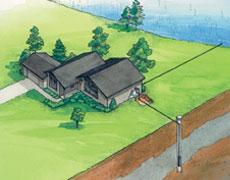
Open Loop
An open loop utilizes a well that has an adequate capacity to provide water flow for both domestic use and the geothermal unit. Most units require 3-10 GPM, depending on size and model.